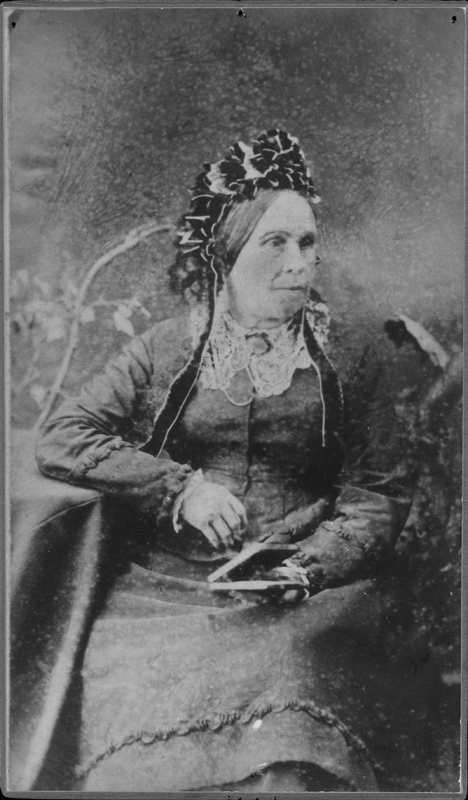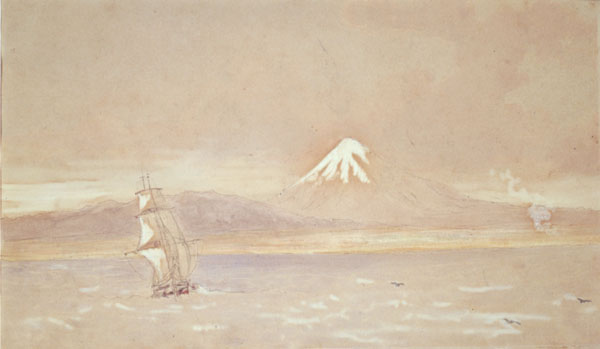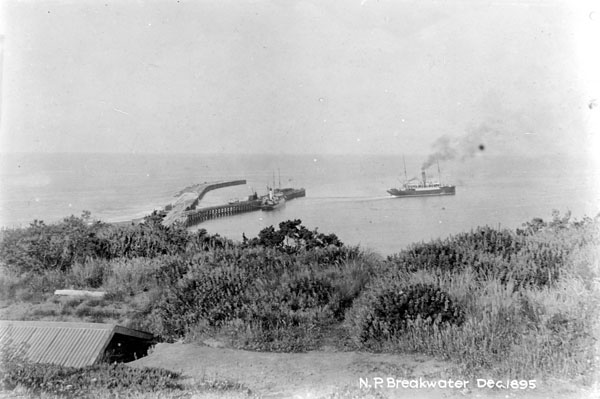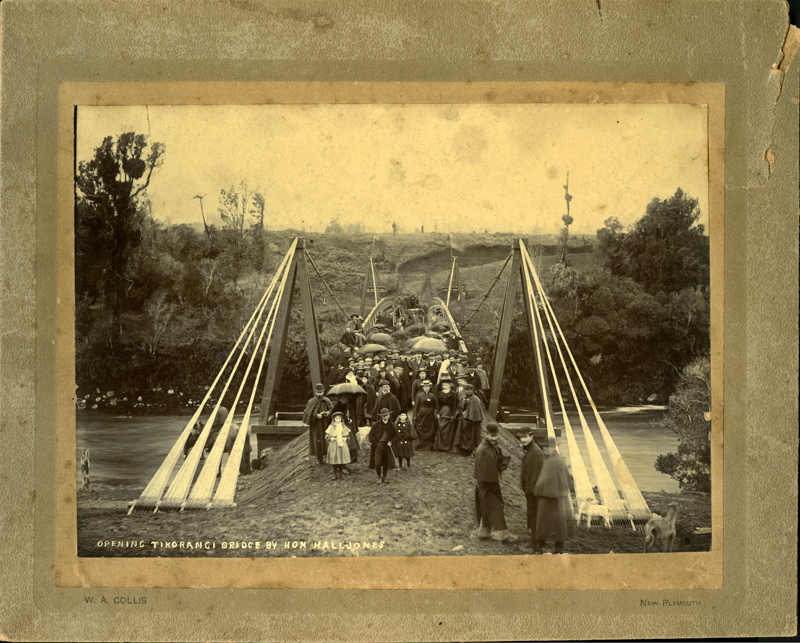






Levi Sarten had a love of the sea, perhaps sparked by a long ocean voyage when he was just an infant. At the age of nine months, he travelled with his parents from Corscombe, England, to land on New Plymouth shores.
A child of Lucy and Edmund Sarten, Levi arrived on the first settler ship William Bryan. He was the first settler child to land on the beach, and his mother, the first settler woman. He grew up, as his name suggests, 'self-assured and determined'. His father, a wheelwright, taught him the trade, and during the Taranaki Wars, Levi joined the Civilian Volunteers in a conflict that would rob him of two brothers, John and Joseph.
In 1860, he married Mary Ann Maria Moon and moved to Huirangi, where the couple produced sixteen children, several of whom died in infancy and one at the age of ten. A story exists that two of their children were kidnapped by Waikato Māori but the story has never been proved. It's thought that this slice of Sarten history may have been confused with the disappearance of Caroline Perrett from her home near Lepperton in 1874.
Levi Sarten became a farmer and took a keen interest in local politics. Despite a large and ever-increasing family, he played the piano and was often asked to entertain at parties. He and his wife became known for their hospitality, and after moving to Tikorangi, Levi became a member of the Clifton County Council. Later, as councillor, he put much time and energy into constructing local bridges.
He helped build the first truss bridge over the Waitara River, and then the Bertrand Road Bridge which connected Tikorangi and Huirangi. One day he would come to public attention as a Government Nominee Member of the New Plymouth Harbour's Board, where he earned the dubious nickname of Hole-in-the-Wall Sarten.
In 1897, the breakwater lay nearly 600 metres out to sea, protecting the port and new shipping trade so important to a growing province. Just one year before, the first shipment of dairy produce - 3456 boxes of butter and 106 cases of cheese - had been taken aboard the Mahinapua, destined for London, nestled into a hold especially fitted out for the trade.
But since 1895, sand had been drifting into the harbour in such large quantities that all the members of the Harbour Board grew concerned over the threat of a 'clogged and ruined port'. They issued orders for the Thomas King dredge to stop dumping sand in the Moturoa area and drop it further up the coast. But nothing changed. The sand continued to flood in. It was then that Levi Sarten produced his plan to deal with it, by making a gap in the breakwater and letting it flow back out with the tide.
In October 1897, Sarten began a one-man campaign to get the rest of the Board to accept this notion. Full of 'unique and persistent conviction', he officially moved that an existing report supporting a hole in the breakwater be tabled and acted upon. It would need to be 40 feet (12 metres) long, he said, but within two years of opening it, dredging would no longer be required. Instead of driving round the end of the breakwater and building up, the sand would simply disappear.
When the Harbour Board resisted, Sarten kept up momentum, hammering his idea home. He talked of how he'd watched sand movements since he was that first settler boy landing on the shore. He suggested an experiment to show how well it would work. By mixing sand with clay and throwing it into the harbour near the cattle wharf, the Board would be able to see how long it would take to clear. In his opinion, it would take only one tide.
While a few Board members agreed to the test, others declared it to be too expensive, and an exercise that would take too long. In the company of so-called experts, Hole-In-the-Wall Sarten refused to listen. He simply shook his head and thundered on. "This sand has been a nightmare for nine years!" he expounded. "Even Carrington cursed this contracted, shoaled and marred harbour!"
While the argument raged back and forth, the flow of sand continued, ruthless and renegade. Finally, Sarten, using all his persuasive powers, talked the Harbour's Board into it. On a 5 to 4 vote, he was given approval to spend £1000 on opening up the wall, providing his plans were sanctioned by the Marine Department.
The entire Board witnessed his delight. But when Sarten explained how he proposed to use iron girders from a disused Goliath crane to shore the hole in the wall up, his joy came crashing down. A deputation of concerned citizens rushed in to object to this 'dangerous and alarming' notion. Levi Sarten's motion was suddenly overturned on a 5 to 3 vote and his hole in the wall theory was put to rest.
But who's to say it wouldn't have worked if Sarten had been allowed to see it through? As a past builder of bridges he was something of an engineer, and as a boy who loved the beaches, he knew something of the sea. Today, harbour sand is still a problem and dredges work long and hard to remove it.
When Levi Sarten died in 1903, an obituary ran in the Taranaki Herald: “Another of those personalities, who link the present with the early days of the Settlement, passed away on Sunday morning 4 January 1903, in the person of Mr Levi Sarten. His death came as a surprise to most of his friends as he was in apparently good health until a few days ago. He was at Waitara on Tuesday last, but on returning to his home at Tikorangi was taken suddenly ill, the symptoms being so serious medical aid was summoned…” Levi Sarten was buried in the Tikorangi Cemetery, survived by his wife, nine sons and two daughters.
Please do not reproduce these images without permission from Puke Ariki.
Contact us for more information or you can order images online here.